When phenol is treated with D2SO4/D2O, some of the hydrogens get exchanged. The final product in the exchange reaction is
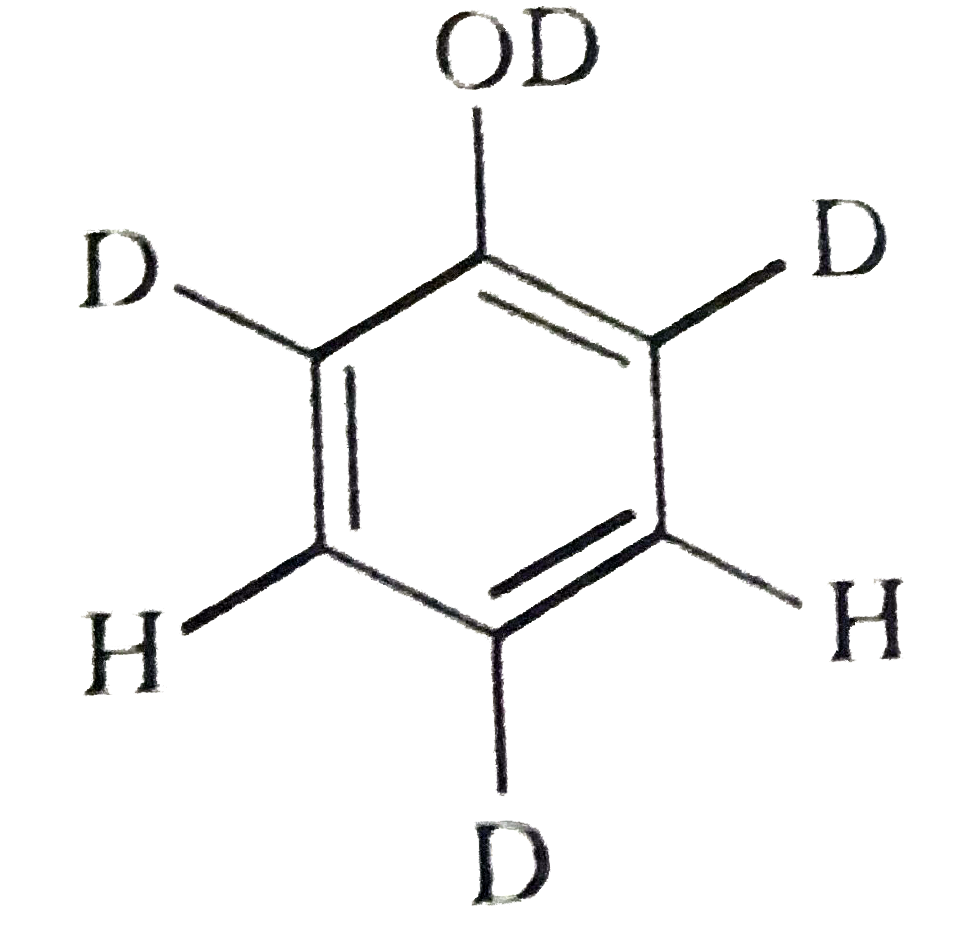
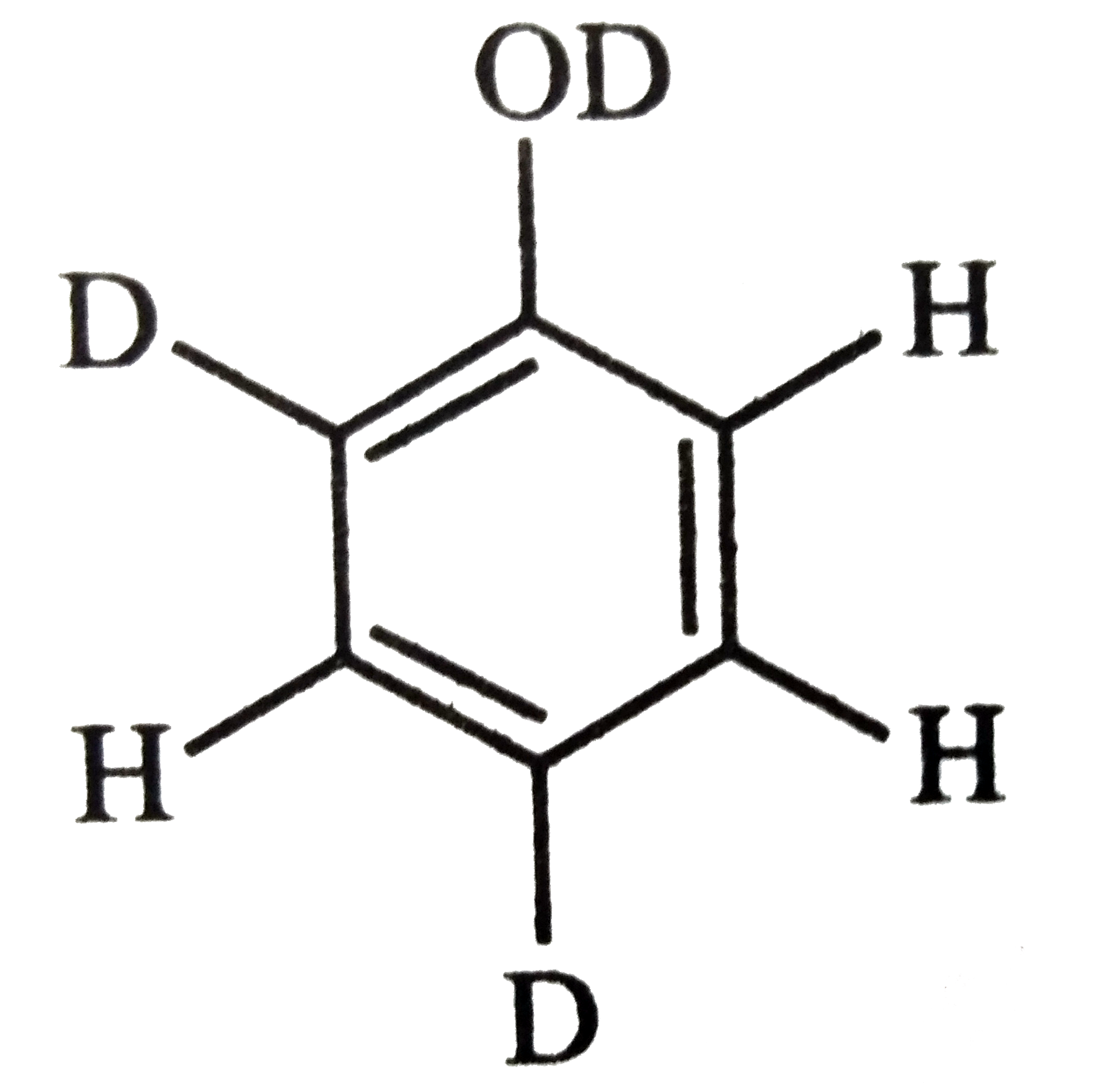
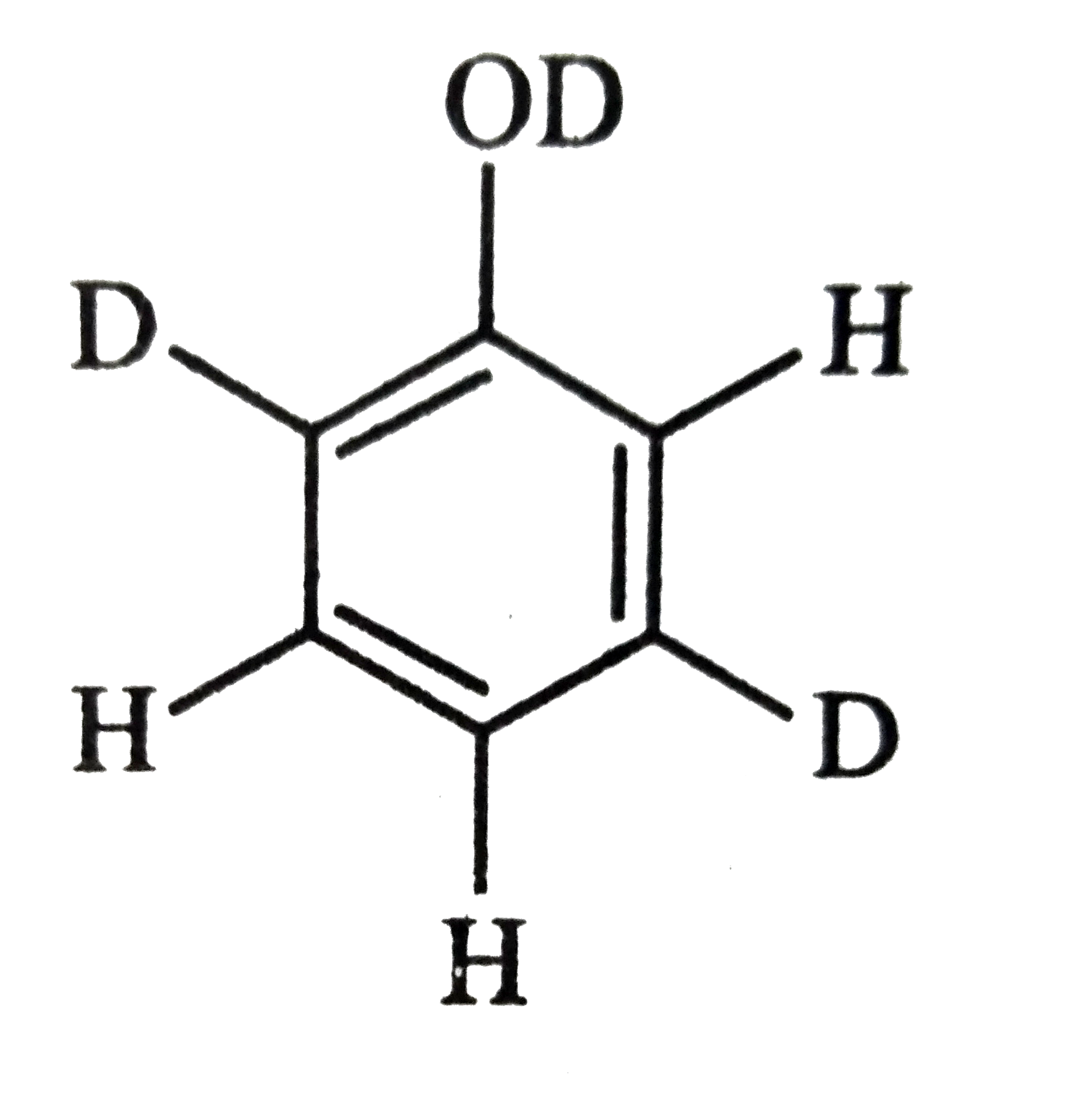
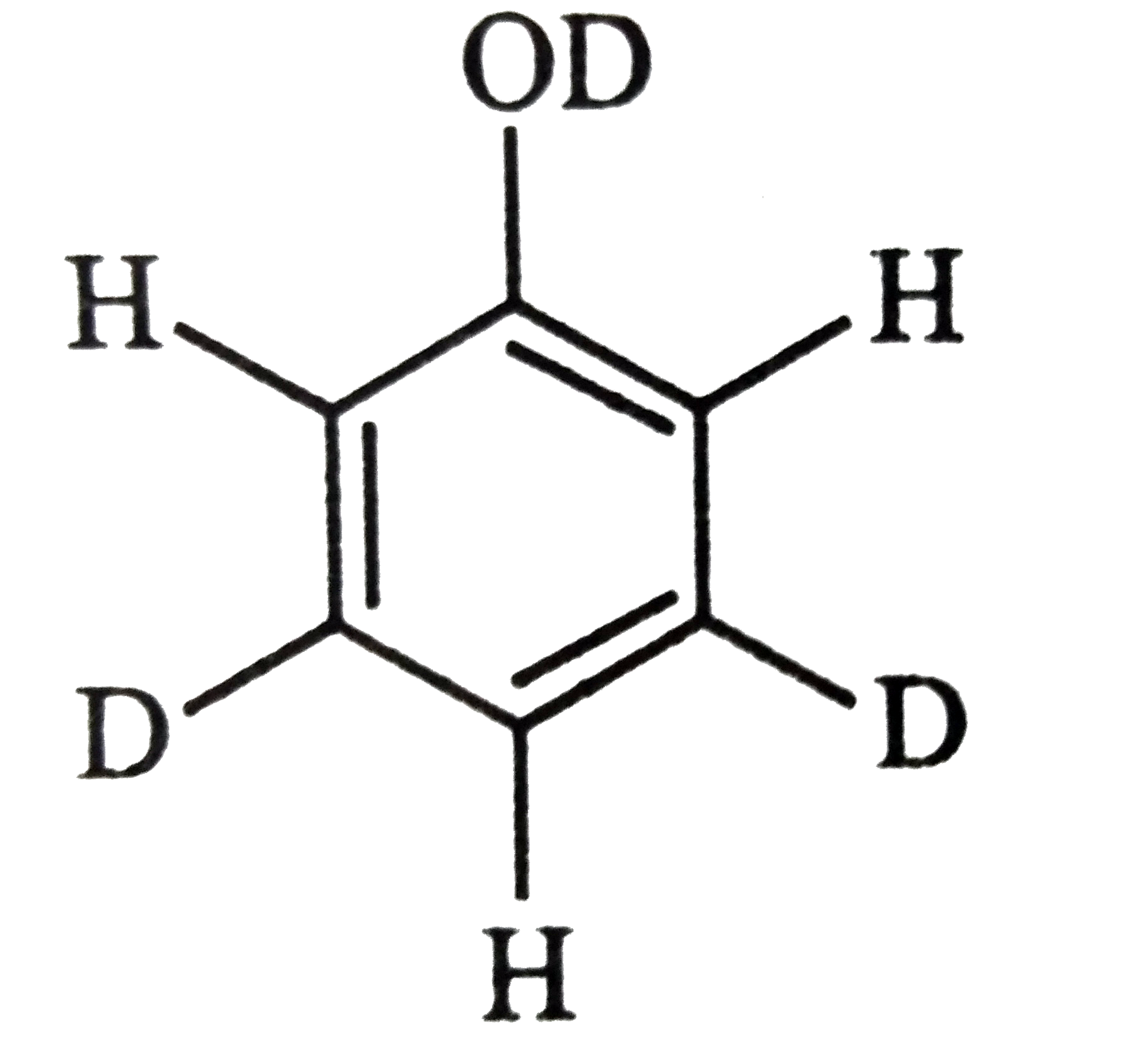
The correct Answer is:A
To solve the question regarding the exchange of hydrogens in phenol when treated with D2SO4 and D2O, we can follow these steps:
1. Understanding the Reactants:
- We have phenol (C6H5OH), which contains a hydroxyl group (-OH) attached to a benzene ring.
- The reactants D2SO4 and D2O are deuterated forms of sulfuric acid and water, respectively. Deuterium (D) is an isotope of hydrogen.
2. Reaction Mechanism:
- When phenol is treated with D2SO4 and D2O, the hydroxyl group (-OH) can undergo exchange reactions where the hydrogen atoms can be replaced by deuterium atoms.
- The hydroxyl hydrogen (H) can be replaced by deuterium (D) from D2O.
3. Electrophilic Substitution:
- The -OH group in phenol is an ortho/para directing group due to its electron-donating nature. This means that any electrophilic substitution will occur at the ortho and para positions relative to the -OH group.
- In this case, the electrophile can be D+ from the deuterated sulfuric acid.
4. Formation of Products:
- The reaction can lead to the formation of two types of products:
- Deuterium can be substituted at the ortho position, resulting in C6H4(OH)(D) (where D is at ortho).
- Deuterium can also be substituted at the para position, resulting in C6H4(OH)(D) (where D is at para).
- The hydrogen atom from the hydroxyl group can also be replaced by deuterium, leading to C6H5(OD).
5. Final Products:
- The final products will be a mixture of ortho and para substituted phenol derivatives, where at least one hydrogen atom has been replaced by deuterium. The hydroxyl group can also be converted to deuterated hydroxyl (-OD).
- Thus, the final products in the exchange reaction will be C6H4(OH)(D) at ortho and para positions and C6H5(OD).
Conclusion:
The final products in the exchange reaction of phenol with D2SO4 and D2O will be deuterated phenol derivatives, specifically ortho and para substituted phenols with deuterium and the deuterated hydroxyl group.
---
- We have phenol (C6H5OH), which contains a hydroxyl group (-OH) attached to a benzene ring.
- The reactants D2SO4 and D2O are deuterated forms of sulfuric acid and water, respectively. Deuterium (D) is an isotope of hydrogen.
- When phenol is treated with D2SO4 and D2O, the hydroxyl group (-OH) can undergo exchange reactions where the hydrogen atoms can be replaced by deuterium atoms.
- The hydroxyl hydrogen (H) can be replaced by deuterium (D) from D2O.
- The -OH group in phenol is an ortho/para directing group due to its electron-donating nature. This means that any electrophilic substitution will occur at the ortho and para positions relative to the -OH group.
- In this case, the electrophile can be D+ from the deuterated sulfuric acid.
- The reaction can lead to the formation of two types of products:
- Deuterium can be substituted at the ortho position, resulting in C6H4(OH)(D) (where D is at ortho).
- Deuterium can also be substituted at the para position, resulting in C6H4(OH)(D) (where D is at para).
- The hydrogen atom from the hydroxyl group can also be replaced by deuterium, leading to C6H5(OD).
- The final products will be a mixture of ortho and para substituted phenol derivatives, where at least one hydrogen atom has been replaced by deuterium. The hydroxyl group can also be converted to deuterated hydroxyl (-OD).
- Thus, the final products in the exchange reaction will be C6H4(OH)(D) at ortho and para positions and C6H5(OD).
The final products in the exchange reaction of phenol with D2SO4 and D2O will be deuterated phenol derivatives, specifically ortho and para substituted phenols with deuterium and the deuterated hydroxyl group.
Topper's Solved these Questions
- ALCOHOLS, PHENOLS AND ETHERSBook:PRADEEPChapter:ALCOHOLS, PHENOLS AND ETHERSExercise:COMPETITION FOCUS JEE (MAIN AND ADVANCED)/MEDICAL ENTRANCES SPECIAL (MULTIPLE CHOICE QUESTIONS WITH ONE CORRECT ANSWER-II)
Explore 12 Videos
- ALCOHOLS, PHENOLS AND ETHERSBook:PRADEEPChapter:ALCOHOLS, PHENOLS AND ETHERSExercise:COMPETITION FOCUS JEE (MAIN AND ADVANCED)/MEDICAL ENTRANCES SPECIAL (MULTIPLE CHOICE QUESTIONS -III) Comprehension
Explore 8 Videos
- ALCOHOLS, PHENOLS AND ETHERSBook:PRADEEPChapter:ALCOHOLS, PHENOLS AND ETHERSExercise:VALUE BASED QUESTIONS WITH ANSWERS
Explore 4 Videos
- ALDEHYDES, KETONES AND CARBOXYLIC ACIDS Book:PRADEEPChapter:ALDEHYDES, KETONES AND CARBOXYLIC ACIDS Exercise:IMPORTANT QUESTIONS FOR BOARD EXAMINATION
Explore 29 Videos
Similar Questions
Knowledge Check
When phenol is treated with D2SO4/D2O, some of the hydrogens get exchanged. The final product in this exchange reaction is
A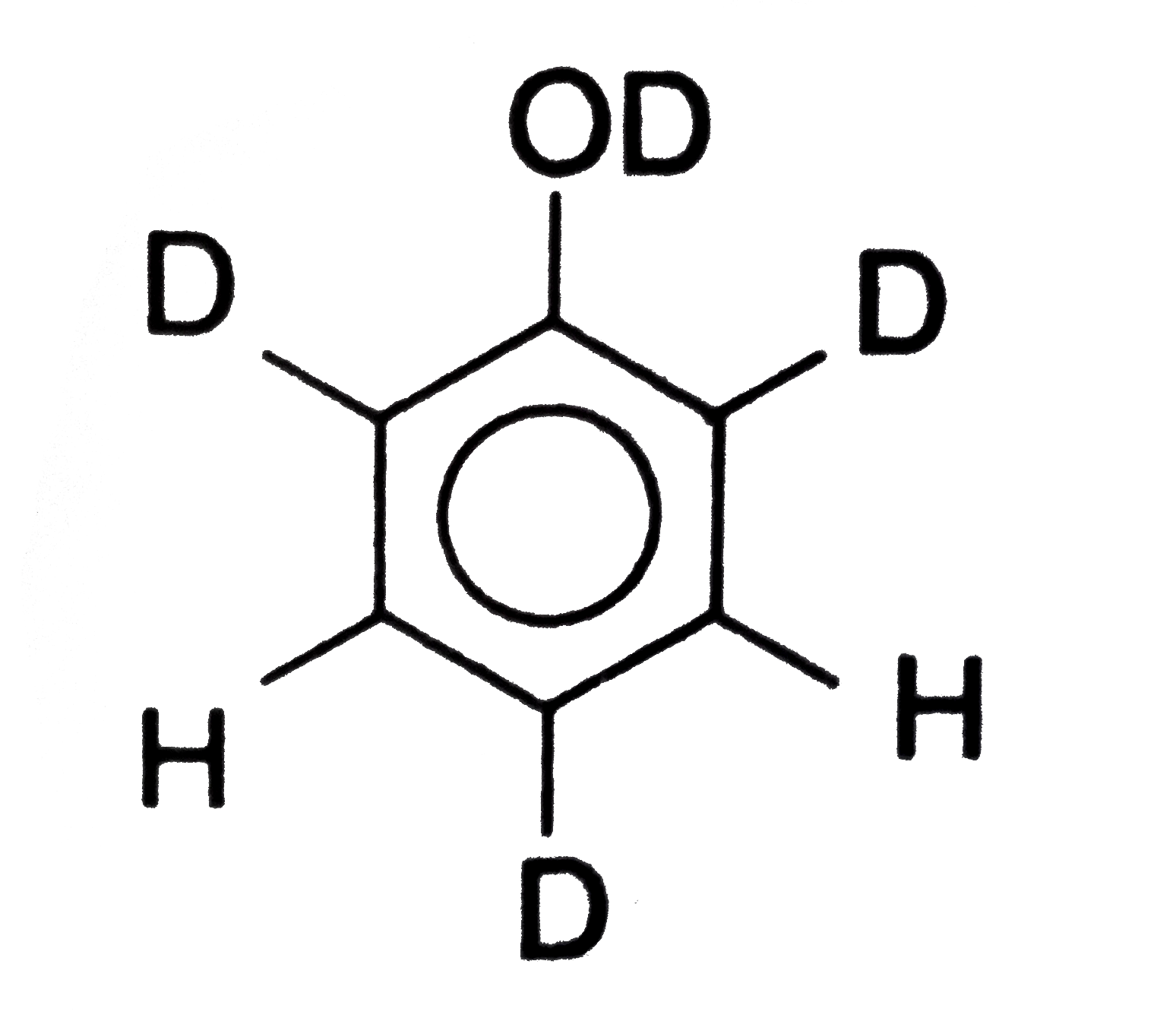 B
B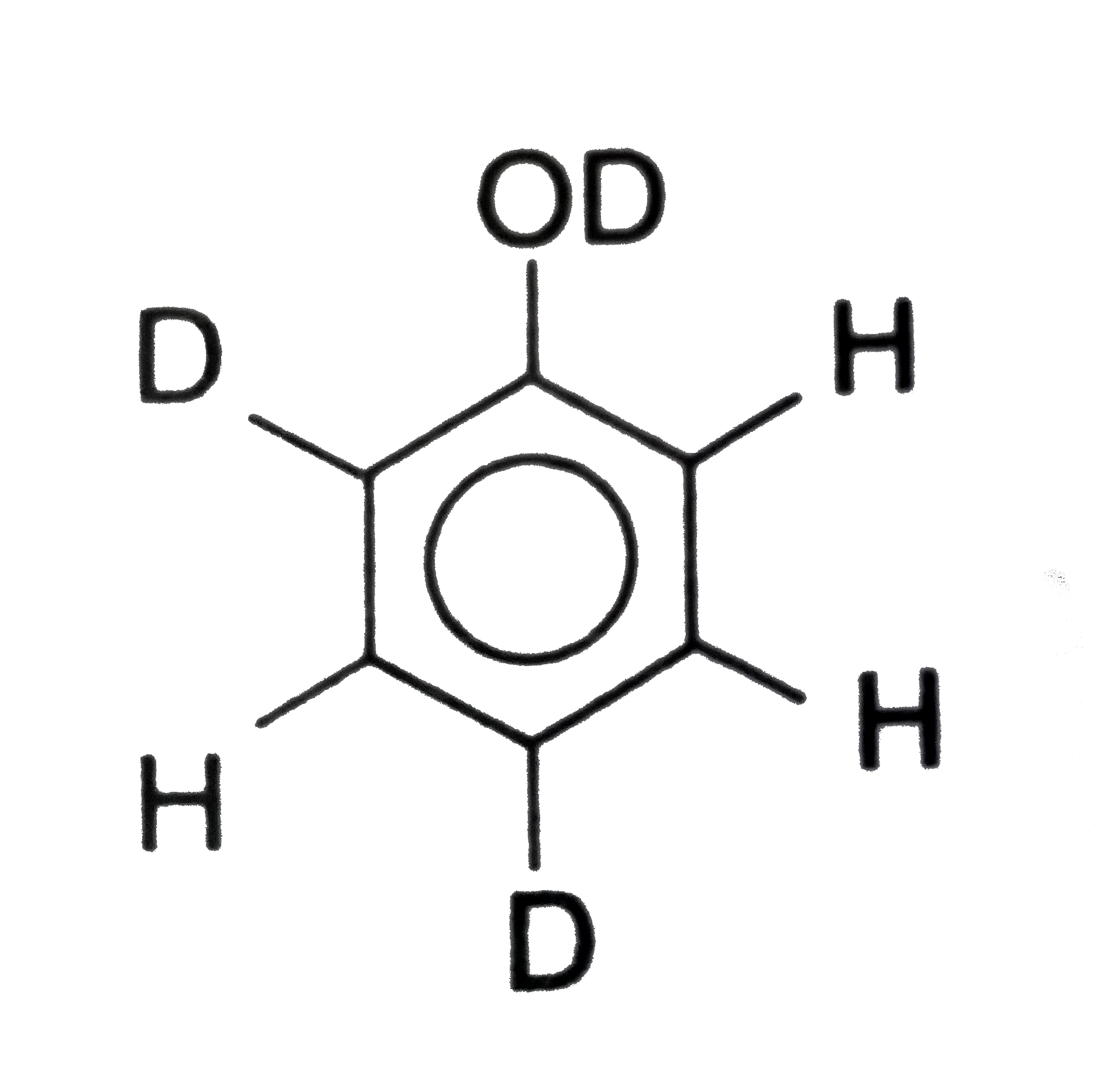 C
C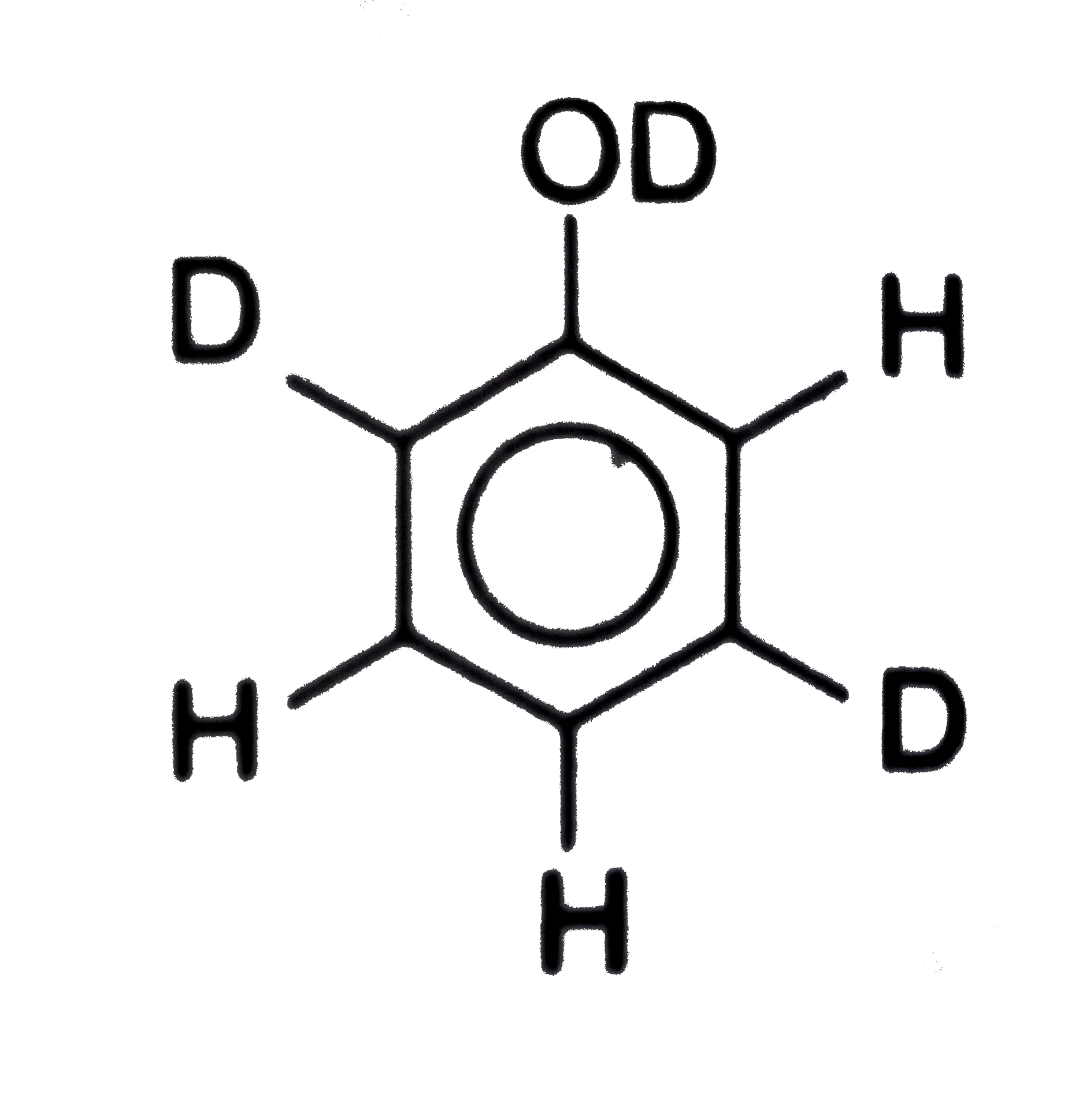 D
D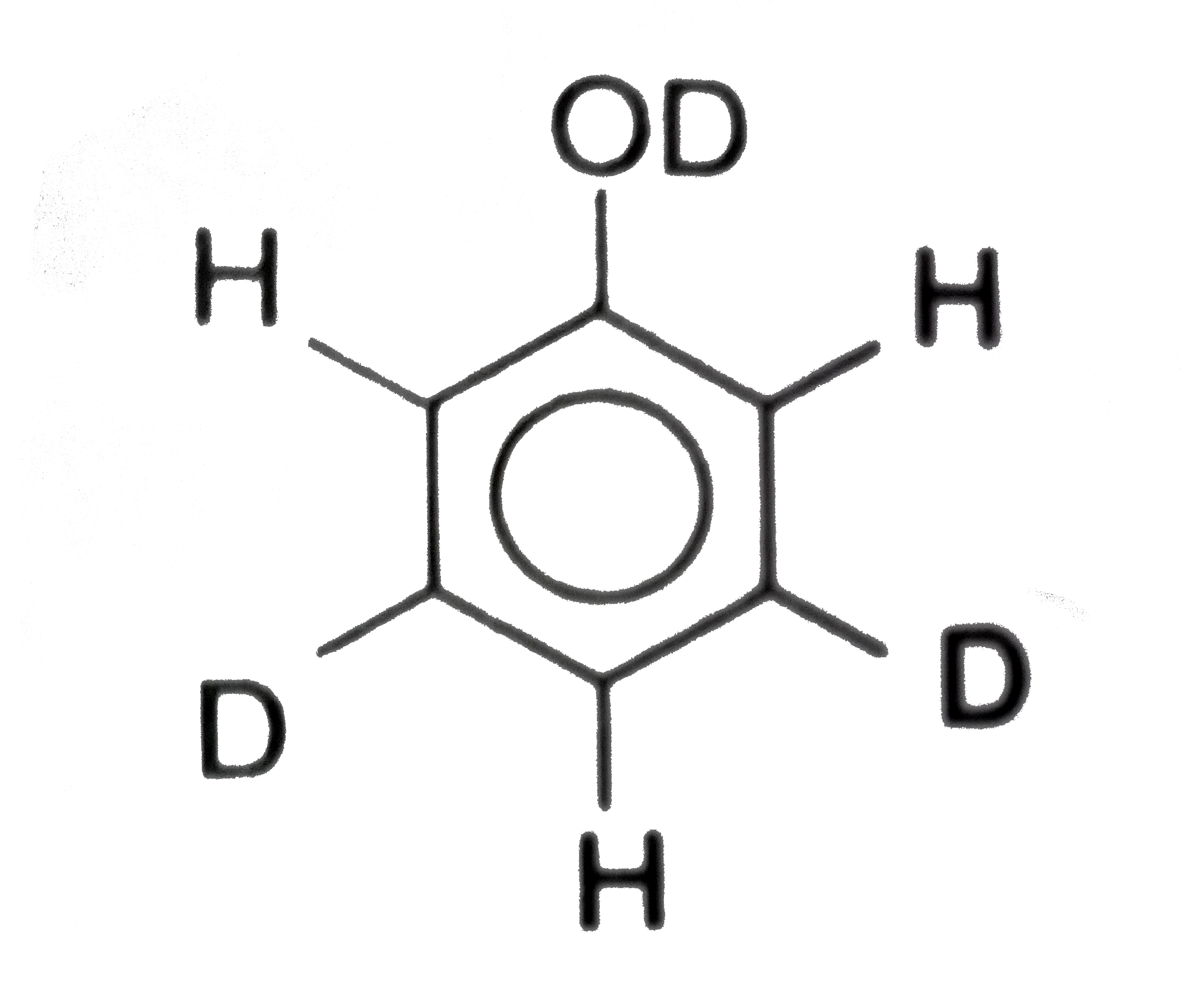
When phenol is treated with D2SO4/D2O, some of the hydrogens get exchanged. The final product in this exchange reaction is
A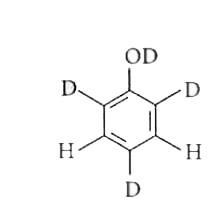 B
B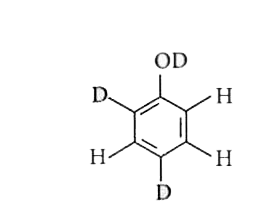 C
C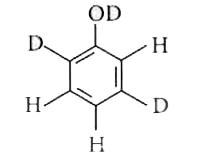 D
D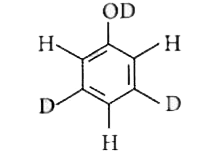
When phenol is treated with D2SO4D2O some of the hydrogens get exchanged . The final product in this exchange reaction is
A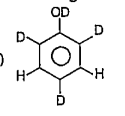 B
B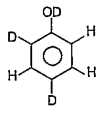 C
C D
D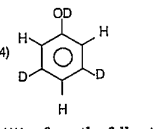
The final product 'D' of the reaction

View SolutionWhen phenol is treated with Br2-water, the product is
View SolutionWhen SO3 is treated with D2O, the products are :
View SolutionWhen sodium peroxide is treated with dilute H2SO4, we get
View SolutionWhen 2-pentyn is treated with dilute H2SO4 and HgSO4 the product formed is
View Solution


